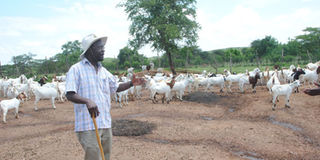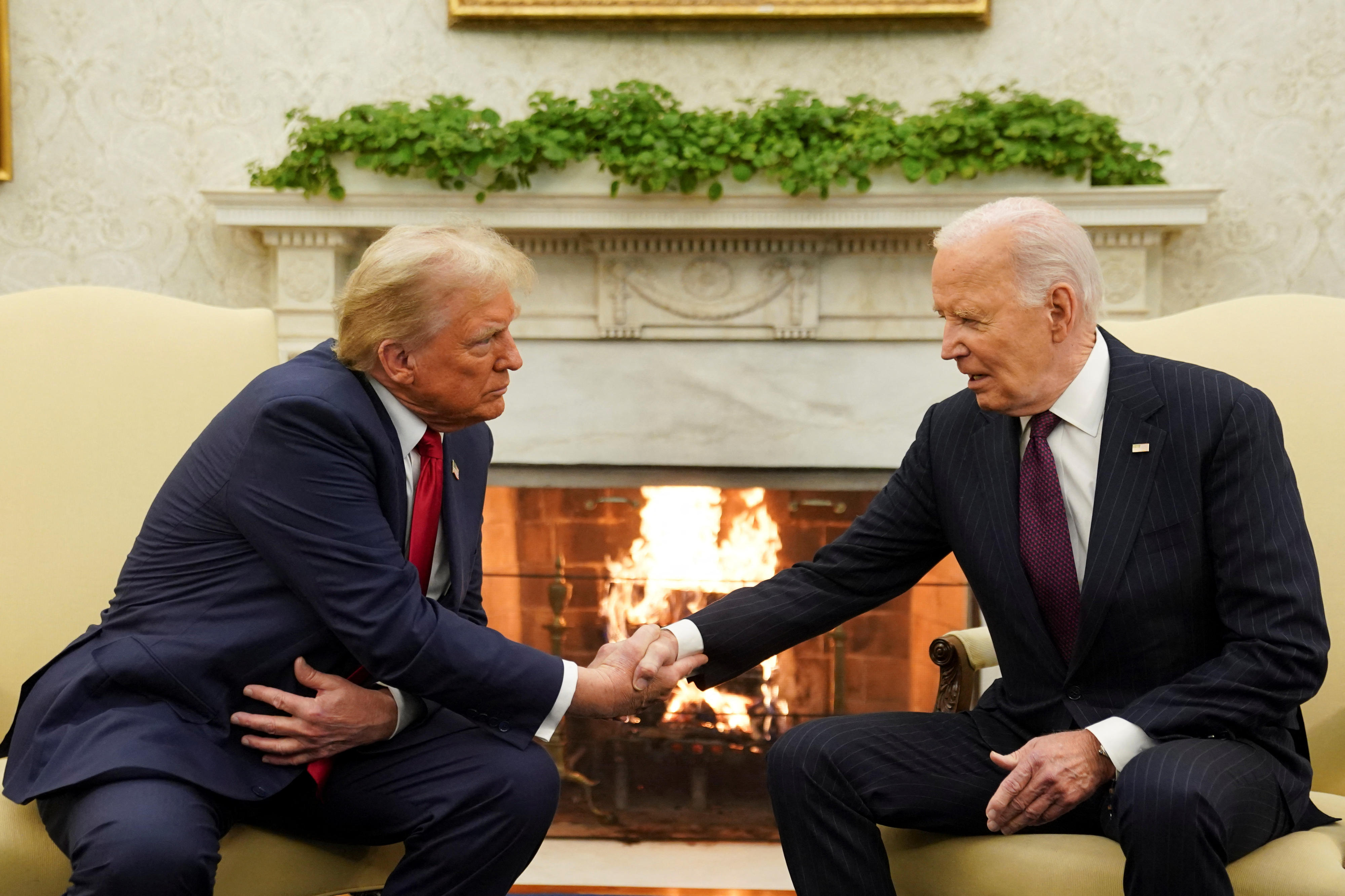Prime
The goat breeder promoting commercial goat farming

Paul Ssembeguya explains a point about goat breeding on his farm. Below: The local, exotic and cross breeds being multiplied for farmers. Photo by Martin Ssebuyira.
What you need to know:
Paul Ssembeguya is one of the leading farmers in the country. While his company, Ssembeguya Estates, is more known for breeding indigenous and exotic goats, it also deals in other livestock such as cattle and poultry. Martin Ssebuyira talked to him about how he started, initial investment, progress of business, the challenges and vision for the future.
I worked in the UK for over 20 years from which I saved money that enabled me to start up the ranch. On returning to Uganda, I followed the advice from my uncle Edward Mugalu on how cattle ranching is a “gold-mine” if it is done with sound management.
Using my savings, I initially bought 180 acres of land in Sembabule but later according to my calculations, with a bigger ranch, it would more profitbale. I bought another 800 acres. Then, later I acquired four square miles.
Although my idea was initially rearing cattle for beef, I sought to exploit the reality that they would not graze on the shrubs and brushes on the land that goats love to feed on.
So, I started with 50 Mubende goats. But when I heard there were Boer goats at Buyana government ranch, I started buying this breed from there to add to the Mubende goats and increase the numbers on my ranch.
Partnership
The offsprings from crossing the Boers with Mubende goats were good. This encouraged me to concentrate on Boers up to 1998 when the goats at the government farm exhibited some level of inbreeding. That was when I decided to import them from South Africa.
I bought 69 Boers at $650 each (Shs1.6m) and, with this, the total number eventually expanded to about 1500 goats.
As I was slowly expanding my farm, the then Resident District Commissioner Sembabule, Charity Kakuhikire, introduced me to President Museveni with the view of a partnership with government to enhance commercial goat farming specifically for export to the Middle East.
The President obliged and visited the farm and was so impressed. He asked me how government can promote rearing goats for export. To this, I suggested that I write a concept paper.
The paper was discussed by various parties at different levels and eventually a memorandum of understanding was agreed on a Shs6.5b five-year project. Two years were for procuring and supplying 500 female Mubende goats to each beneficiary farmer and three years for monitoring and supervising them.
Critical mass
It was my proposal that I work with other goat farmers in Sembabule to raise a breeding stock of 192,000 goats, from which to derive 16,000 offsprings for export every month.
Under this arrangement, a cooperative movement initially comprising 108 farmers was started. Each farmer with at least 150 acres of land would be given 500 Mubende goats in batches of 50 at a time to start a nucleus for generating the critical mass ideal for sustained export.
My company, Ssembeguya Estates Uganda Ltd, under the arrangement offered Shs700m to establish a breeding stock for the short- and long-term support of the project.
The plan is that with that breeding stock producing 16,000 goats per month, which translates to 4,000 goats weekly, it would satisfy the Middle East market buying white/Savannah goats at US$800 (about Shs2m) each.
I think that if Uganda can export this number of goats per month, it would bring relief to the balance of trade to the tune of $41.6m (Shs 104.8b).
Given our comparative advantage, it would need only Shs188b to extend the project to the 29 districts in the cattle corridor to fetch Shs 1.2trillion.
Benefits
Most the beneficiary farmers of the project are doing well. Each of them have a breeding stock of 200 goats in only three years. They are allowed to sell off the male goats, which is transforming the farmers’ livelihoods.
Since the project started in 2005, 67 per cent of the total Shs6.7b pledged to the project has been released.
In all, up to 23,028 Mubende goats have been distributed to the 108 benefiting farmers in batches of 50 as the farmers’ performances are progressively monitored.
Each benefiting farmer has also received an exotic Savannah male goat as a contribution by Ssembeguya Estates to cross with the female local breeds to improve the quality of the offspring.
Savannah goats attain slaughter weight in only five to eight months, compared to the two and a half years that the local breeds take.
The other advantage is that 85 per cent of the exotic breeds deliver two kids at once, 10 per cent deliver three kids and only five per cent deliver a single kid. The males have a high libido with each having the capacity of mounting 50 females. This is the productive superiority that the project is cultivating.
Challenges
The farmers are now selling male offsprings locally to raise funds to construct goat houses, buy drugs and cater for other family needs.
However, it has not without challenges. One of them is theft of the goats; another is the lack of water because Sembabule is a dry cattle corridor, and also the delay in releasing funds that sometimes increases the project cost.
Like any other project in Uganda, it has its own problems but the project design itself, has played a part in guaranteeing its survival.
The challenges have not derailed me from pursuing my dream to develop an integrated livestock value addition for strategic exports.
I have proposed to the government to construct a modern abattoir in conformity with international standards for meat export to process 1,000 goats, 500 heads of cattle and 30,000 chicken per day.
Sustainable supply
Because farmers in Sembabule have over 20,000 goats and the total offspring stands at 36,811 yet the project is still ongoing. With 200,000 heads of cattle, this will form a basis for sustainable supply of the required animals.
The export of chicken would then necessitate an establishment of a hatchery handling 100,000 eggs per day to supply chicks to farmers within and around Sembabule District. This is now possible because the electricity supply has extended to Ntusi and Lwemiyaga.
And with the comparative advantage of having chicken, goats and cattle that are being slaughtered, we intend to set up a chicken feeds mill using the abundant supply of raw materials and a chicken demonstration farm on Ssembeguya Estates.
Leading earner
Also, there are plans to establish a tannery to processes the hides and skins from the animals that are slaughtered. Then, with the other parts from the slaughtered cattle, goats and chicken, establishing a piggery would make use of that.
The pigs will feed on blood from the abattoir, chicken intestines and other stomach contents as these are cheaper and more effective.
We would also produce biogas from all animal droppings as well as packaging the gas for sale.
Fast-growing beef and milk embryos would be imported for improvement of indigenous breeds by leasing resultant bulls to farmers.
If these are set up there would be no sector to beat agriculture in being the leading export earner and help in eradicating poverty among rural households.




